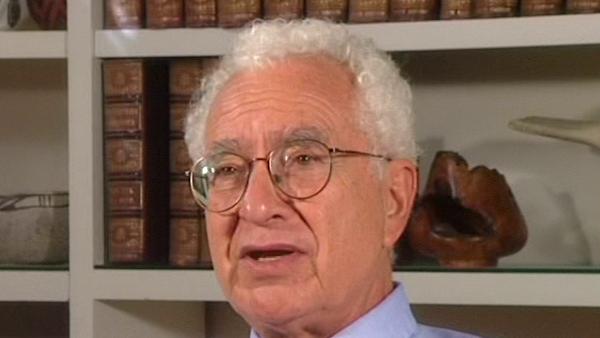NEXT STORY

When theory was in disgrace
RELATED STORIES

NEXT STORY

When theory was in disgrace
RELATED STORIES


|
Views | Duration | |
|---|---|---|---|
| 21. Using symmetry to learn about physical laws | 1 | 2628 | 03:24 |
| 22. When theory was in disgrace | 2235 | 01:58 | |
| 23. The race to calculate the relativistic Lamb shift | 2814 | 02:53 | |
| 24. The shell model and J-coupling | 1722 | 00:48 | |
| 25. Examining intermediate coupling inside the nucleus | 1506 | 04:51 | |
| 26. Taking courses at Harvard | 2231 | 02:16 | |
| 27. Student days: living hand-to-mouth | 1 | 2092 | 04:44 |
| 28. The Institute for Advanced Study | 2288 | 04:07 | |
| 29. Gell-Mann's first paper with Francis Low | 2010 | 02:00 | |
| 30. Work on Radar System at the University of Illinois | 1500 | 02:20 |


What I learnt from Viki [Victor Weisskopf] was mainly an attitude which I've described in a paper that I presented in his honor called 'The Garden of Live Flowers. He kept insisting on a pedestrian approach. Now, a pedestrian approach is not my approach, I like clean mathematical results and elegant demonstrations and so on… and so on. But nevertheless there was part of Viki's style that I was able to benefit from, and that was a sort of unpretentiousness: the idea that you shouldn't try to construct right away, ab initio, the ultimate theory of things. But you should try and learn something... try and learn whatever you can learn about the theory of a process or a phenomenon and then gradually learn more and more and finally putting the pieces together as, say, Maxwell did, you might be able to construct a very fundamental description. And it was that emphasis on the primacy of physical law over mathematical elegance that was the… the main lesson that I learned from Viki. Concentrate on trying to learn something about the physical laws while you're doing your theoretical work, and don't feel that you've made huge progress just because you've written down something that’s mathematically elegant, because what's important is learning more about the phenomenon. So between that and my natural predilection for using formalism, I was able to develop a sort of a compromise approach in which I looked for elegant mathematical aspects of things that could throw light on the physical laws, lead us to learn more about them, and hope that some day these would congeal into a real theory, rather than trying right away to write down the theory. And as I pointed out in that paper, it was very fortunate that I was working in a field where, once you'd understood some symmetry properties and some dispersion properties, and so on and so forth, of the physical laws, you could then construct the actual laws. For example, Yang-Mills theory which underlies most of what we finally described in the synthesis - that's called the standard model - the Yang-Mills theory is such that once you know the symmetries you know the theory, pretty much. And, of course, one of the best ways of using elegant and simple mathematics to learn about the properties of physical laws was through symmetry. And it just so happened that the final step going from the symmetry to the dynamics, which might in principle have been very, very difficult, was actually very easy.
New York-born physicist Murray Gell-Mann (1929-2019) was known for his creation of the eightfold way, an ordering system for subatomic particles, comparable to the periodic table. His discovery of the omega-minus particle filled a gap in the system, brought the theory wide acceptance and led to Gell-Mann's winning the Nobel Prize in Physics in 1969.
Title: Using symmetry to learn about physical laws
Listeners: Geoffrey West
Geoffrey West is a Staff Member, Fellow, and Program Manager for High Energy Physics at Los Alamos National Laboratory. He is also a member of The Santa Fe Institute. He is a native of England and was educated at Cambridge University (B.A. 1961). He received his Ph.D. from Stanford University in 1966 followed by post-doctoral appointments at Cornell and Harvard Universities. He returned to Stanford as a faculty member in 1970. He left to build and lead the Theoretical High Energy Physics Group at Los Alamos. He has numerous scientific publications including the editing of three books. His primary interest has been in fundamental questions in Physics, especially those concerning the elementary particles and their interactions. His long-term fascination in general scaling phenomena grew out of his work on scaling in quantum chromodynamics and the unification of all forces of nature. In 1996 this evolved into the highly productive collaboration with James Brown and Brian Enquist on the origin of allometric scaling laws in biology and the development of realistic quantitative models that analyse the influence of size on the structural and functional design of organisms.
Tags: The Garden of Live Flowers, Yang-Mills theory, Victor Weisskopf, James Clerk Maxwell
Duration: 3 minutes, 24 seconds
Date story recorded: October 1997
Date story went live: 24 January 2008